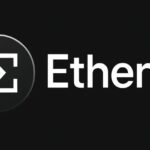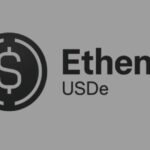Clear rules should be established by the Bank of Korea for stablecoin issuers, allowing both banks and non-banks to issue the tokens, according to Kaia DLT Foundation chair Dr. Sangmin Seo.
The Bank of Korea’s push for the banking sector to lead the rollout of won-denominated stablecoins is said to lack logic by Dr. Sangmin Seo, the chair of the Kaia DLT Foundation.
In a report that was released on Monday, the central bank argued that banks are already subject to strict regulations, including capital, foreign exchange, and Anti-Money Laundering requirements, which could help minimize any risks that are associated with introducing stablecoins to the country.
At the same time, a policy consultative body that is jointly made up of currency, foreign exchange, and financial authorities is wanted by the BOK to decide on issuer eligibility, volumes, and other key considerations.
Seo told that while the central banks’ concerns about stablecoin risks are understandable, its argument for banks leading a rollout “seems to lack a logical foundation.”
Equal Rules for Everyone Are the Way Forward: Seo
Seo argued that a better solution would be to establish clear rules for stablecoin issuers that can “minimize monetary risks and foster innovation.”
It was said by him that it would also allow both banking and non-banking institutions that meet these criteria to “compete and demonstrate their strengths.”
“It would be even more valuable if the Bank of Korea could provide guidelines on how these risks can be mitigated and what qualifications are required for an issuer to be regarded as trustworthy.”
In June, it was proposed by BOK deputy governor Ryoo Sangdai that South Korean banks be the primary issuers of stablecoins in the country to ensure a safety net, before gradually expanding to other sectors.
Stablecoin Yield Ban Also Under Consideration
The BOK also wants interest payments on stablecoins to be banned, arguing that it could directly compete with bank deposits and disrupt the sector, and has instead pitched the commercialization of deposit tokens, which are digital tokens that represent deposits in a bank or financial institution, to be pursued.
A total ban on stablecoin yield would be an excessive measure and could harm and limit adoption, Seo said.
“While I agree that stablecoins themselves should not include any yield-bearing features, I believe it would be excessive to restrict the generation of additional yield through the use of stablecoins,”
he said.
“Doing so would significantly limit their utility and adoption; therefore, I think allowing supplementary yield creation should be permitted.”
South Korea’s Stablecoin Market Gains Momentum
At least eight major South Korean banks announced plans in June to offer a stablecoin pegged to the South Korean won, with planned launches across late 2025 and early 2026.
Meanwhile, Naver Financial, which is the fintech arm of South Korean tech conglomerate Naver, is reportedly moving forward with a plan to acquire Dunamu, which operates the country’s largest cryptocurrency exchange, Upbit, and plans to launch a Korean won-backed stablecoin project once the acquisition is complete.
The crypto industry in South Korea has benefited from a more favorable environment following the election of President Lee Jae-myung in June, who has since pushed forward with various crypto-related laws, including a bill to legalize stablecoins.















